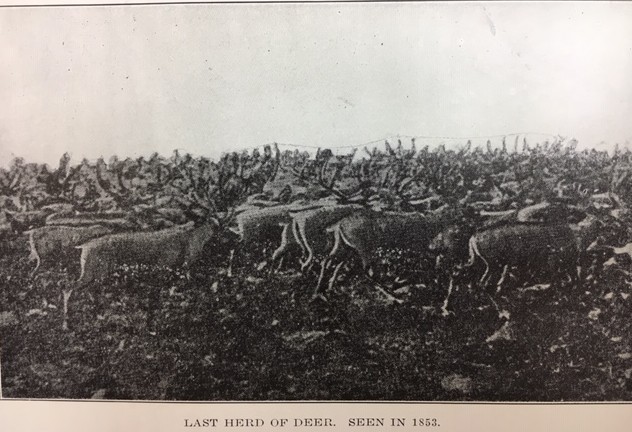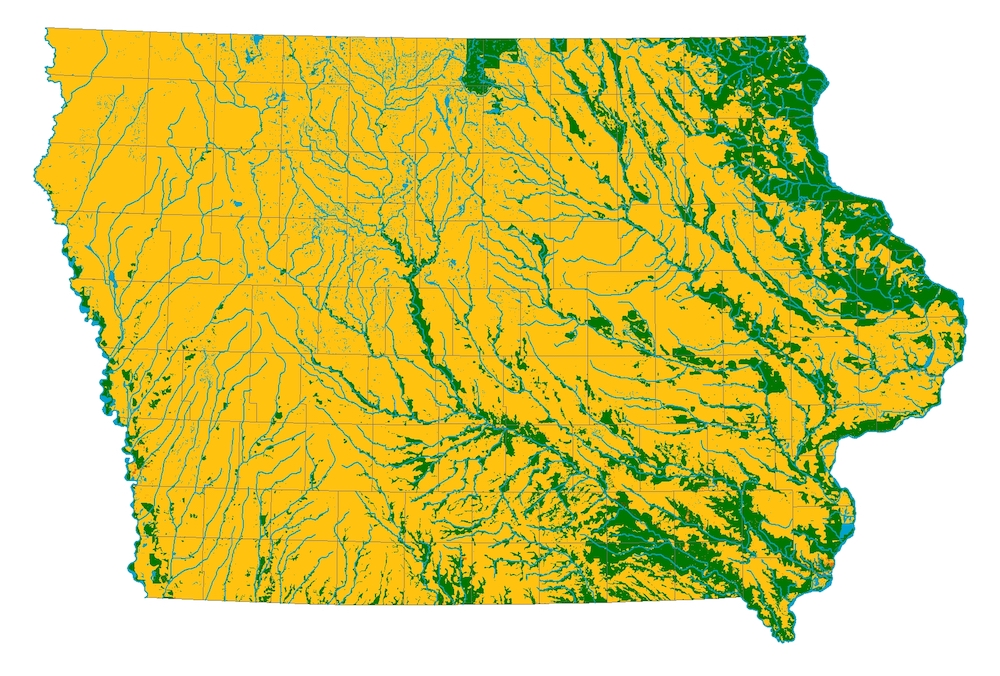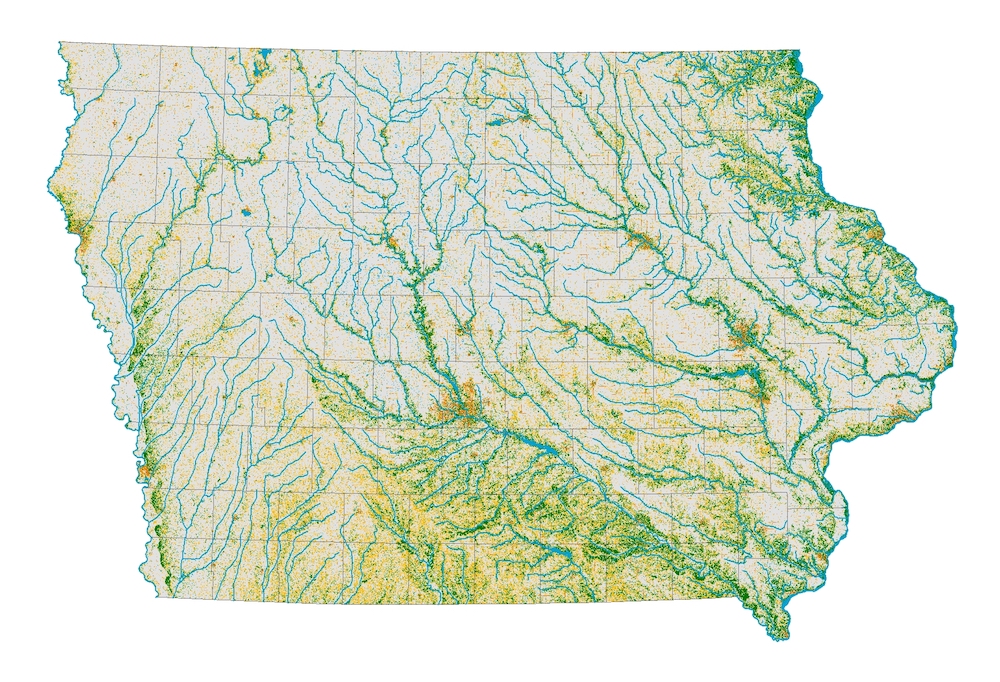Animal Migrations, Human Intervention, and Extreme Weather: Newcastle Winter 1852-53
Hamilton county, Iowa

Sarah Brew-Bonebright remembers the intense cold of 1852-1853 as it affected human migrants to the new county and grazing animals, still numerous when new human settlers entered the territory. That winter, the severe wind and storms from the northwest forced the big game southward. At intervals during the winter great droves of elk and deer were seen making their way through the mountains of snow along the river east of town. Hunters did not molest them, she recalls, except in necessity.
In fact, human inhabitants, trapped in place by the weather relied almost completely on deer for food. She remembers eating venison for breakfast, dinner, and supper that winter with little else. The migrating deer, injured and exhausted by the difficult journey were followed by wolf-packs that also feasted on the carcasses of those deer that fell behind.
The migration affected the plants of the territory as well. Hazel-brush, bramble-thickets and saplings along the path of the moving animals was browsed to the ground or to the snow’s surface and good-sized trees were limbed and de-barked by the hungry, herbivorous deer and elk. Though Sarah Brewer-Bonebright remembers only necessary hunting of the animals, she also remarks that the big game herds were never so numerous in that area again. She had heard tales of subsequent massive deer-killings elsewhere.



Image Source (both maps + legend): INHF.org
The rigorous winter and the following dangers when it began to break up made human travel any distance unthinkable. Families stayed at home on half-rations, and teamsters from Des Moines, Dubuque, and Iowa City who moved goods through the new state had considerable difficulty making trips through the winter snowfields and spring streams and roads. The first were unfordable; the second, impassable.
Domestic animals fared little better that winter. Many sheep were lost in blizzards though young lambs, calves, and piglets were brought into the house and warmed at the fire, often kept in a space beneath the floor accessed through a trapdoor.
Source: SHSI: Sarah Brewer-Bonebright as narrated to her daughter Harriet Bonebright-Closz, Reminiscences of Newcastle, Iowa, 1848: A History of the Founding of Webster City, 1921.
